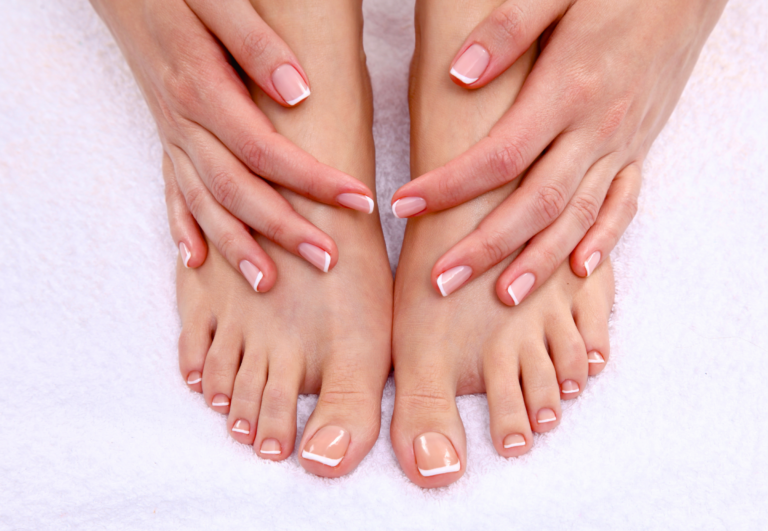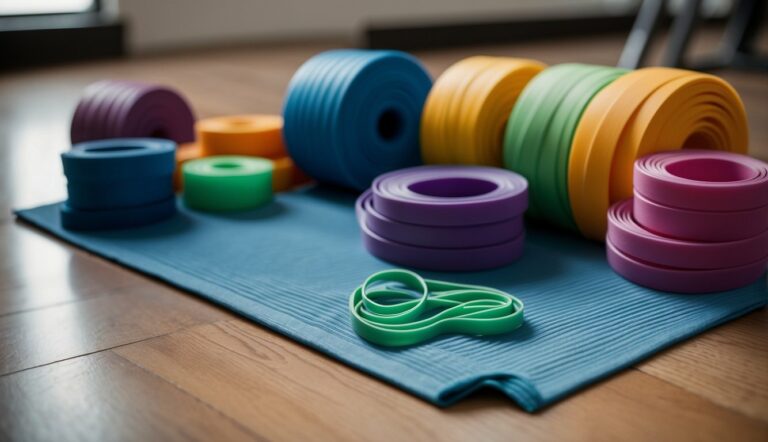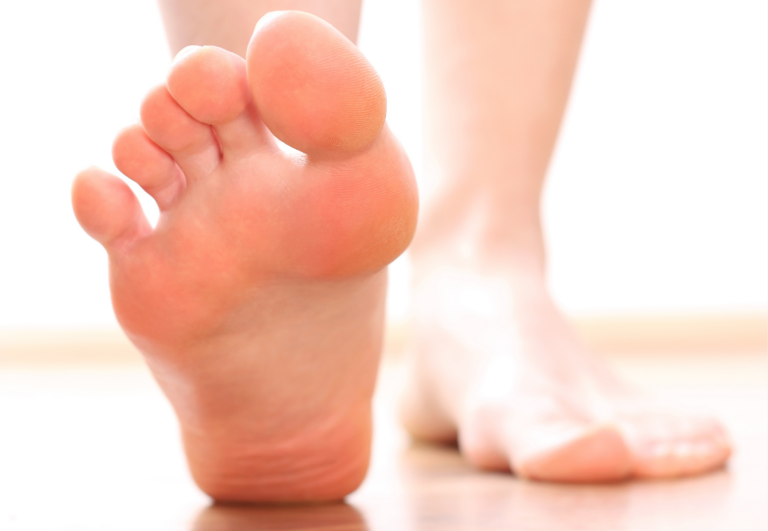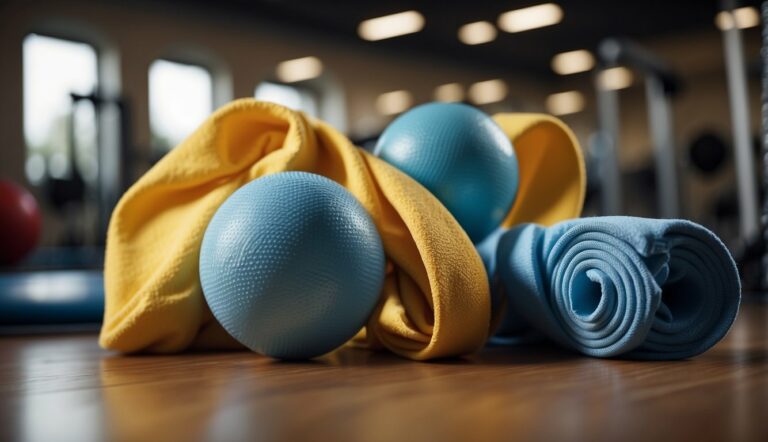Foot Alignment Correction Methods: A Guide to Improving Your Posture and Gait
Having proper foot alignment is vital for overall health and comfort. Through my experience with toe spacers, I know they can be key to relieving foot and ankle pain. They work by spreading your toes, restoring the natural alignment of your feet. This improved alignment has the potential to alleviate various types of pain and enhances foot function.
When the feet are misaligned, it can lead to an array of issues like plantar fasciitis or Achilles tendonitis. These aren’t just foot conditions—the effects can often be felt up through the ankle and even higher. That’s why addressing foot alignment early is crucial. Simple exercises like toe tapping, marble pickup, or using resistance bands can aid in strengthening and realigning feet.
Many who have chronic foot pain turn to orthotics, which are custom-designed to support and correct your foot alignment. They work subtly by repositioning the foot as you go about your day. For those looking for natural correction methods, maintaining a healthy weight and choosing footwear wisely contribute significantly to foot health. In my experience, these steps, combined with regular foot exercises, can make a meaningful difference in foot and ankle function.

Anatomy of Foot Alignment
In addressing foot alignment, it’s crucial to understand the structure we’re working with. I’m focusing on the bone and joint arrangement, as well as the involved muscles and tendons, which are fundamental to maintaining proper foot alignment.
Bones and Joints
The foot is a complex structure composed of the ankle, bones, joints, and arches, which play pivotal roles in stability and movement. The foot can be divided into three parts:
- Forefoot: This includes the toes (phalanges) and the five longer bones (metatarsals).
- Midfoot: A pyramid-like collection of bones forming the arches of the foot.
- Hindfoot: This area connects to the midfoot via the subtalar joint and consists of the heel (calcaneus) and the ankle (talus) above it.
These bones are connected by joints that facilitate movement, including the crucial ankle joint, which acts as a hinge between the foot and lower limb. Here’s a basic table laying out the bones:
| Section | Bones | Function |
|---|---|---|
| Forefoot | Phalanges and Metatarsals | Support weight, enable toe movement |
| Midfoot | Navicular, Cuboid, Cuneiforms | Provide arch support, distribute weight |
| Hindfoot | Calcaneus and Talus | Support ankle; enable upward & downward movement |
Muscles and Tendons
The muscles and tendons in the foot are interconnected with the hip and spine to ensure coordinated movement. Two significant structures are:
- Arch-supporting muscles: They stabilize the foot’s arches, essential for proper foot alignment.
- Achilles tendon: This bridges the gap between the calf muscles and heel, impacting the ankle‘s and foot’s movement.
It’s important to maintain strength and flexibility in these muscles and tendons to support the foot’s structure and function. Regular stretching and exercises can keep these soft tissues in good health to support your foot alignment. Here’s a concise list of key muscle groups:
- Tibialis anterior – helps in upward movement of the foot
- Tibialis posterior – supports the arch
- Peroneals – control movement on the outer edge of the foot
- Flexors – assist in bending the toes and stabilizing the midfoot
- Extensors – help lift the toes
By understanding the anatomy involved in foot alignment, you can better appreciate how various elements of the foot work in harmony. Whether using toe spacers or engaging in targeted exercises, acknowledging the role of bones and joints, alongside muscles and tendons, is essential in correcting and maintaining proper foot posture.
Common Foot Alignment Issues
In my experience as a toe spacer expert, I find that foot alignment issues often stem from structural abnormalities or gait patterns. These can lead to discomfort and problems with mobility if left uncorrected.
Overpronation and Supination
Overpronation occurs when the foot rolls inward excessively upon landing, causing flat feet or low arches. This can strain various foot muscles and result in gait abnormalities. On the other hand, supination—when the foot rolls outward excessively during motion—often contributes to high arches and can lead to increased stress on the ankles and outside of the foot.
Overpronation Signs:
- Shoe wear on the inner side
- Flat or low arches
Supination Signs:
- Shoe wear on the outer side
- High arches
Bunions and High Arches
Bunions are painful bony bumps that form at the base of the big toe, often due to misalignment or excessive pressure over time. They’re more than just a cosmetic issue; they can significantly affect your gait. High arches, in contrast, can lead to heel spurs and place undue stress on the balls of the feet. Both conditions can result from or lead to further misalignments in the foot and ankle.
Bunion Indicators:
- Protrusion at the base of the big toe
- Discomfort in tight shoes
High Arch Effects:
- Poor shock absorption
- Potential heel spurs
Knowledge of these issues guides my approach to helping individuals find relief through foot alignment strategies, often starting with non-invasive methods such as toe spacers to evenly distribute pressure across the foot.
Assessment and Diagnostics
When correcting foot alignment, accurate assessment and diagnostics are imperative. Identifying issues accurately informs our approach to treatment, ensuring each patient receives care tailored to their specific needs.
Physical Examination
My experience with toe spacers has taught me the importance of a thorough physical examination. Symptoms like pain, swelling, or abnormal gait can indicate misalignment issues, which I carefully observe. I also watch for deformity or instability during the exam. By taking a detailed medical history, a physical therapist or doctor can discern patterns that suggest underlying conditions. Through palpation and mobility tests, specific areas of concern are identified, which guides the application of physical therapy techniques.
Imaging Techniques
To complement my evaluations, radiographic measurements using imaging techniques like X-rays are crucial for a more in-depth assessment. X-rays, especially AP, lateral, and mortise views, are standard due to their reliability in diagnosing conditions such as Achilles tendon ruptures and ankle fractures. They can, however, sometimes miss injuries like syndesmosis. When I have concerns about a patient’s foot alignment, I ensure they receive these images for a complete picture. A podiatrist can then analyze these images in conjunction with a physical exam to develop a robust treatment plan.
Non-Surgical Treatment Methods
When it comes to correcting foot alignment without surgery, two effective approaches are the use of orthotic devices and specific exercise programs. These methods can help alleviate pain, improve function, and may address underlying structural issues such as flat feet, high arches, or bunions.
Orthotic Devices
Custom orthotics are shoe inserts designed to support and comfort your feet. They’re tailored to the contours of your feet and work by redistributing pressure, which can be particularly beneficial for dealing with conditions like hallux valgus—a common type of bunion. Prefabricated orthotics can also be effective; they’re widely available and can provide relief by offering additional support where it’s needed most, such as under the arch or ball of the foot. In addition to these, supportive shoes with a wide toe box and good arch support can be vital for day-long comfort and foot alignment.
Orthotic device options:
- Custom orthotics: Tailor-made for individual foot structure.
- Prefabricated orthotics: Ready-made inserts that offer extra support.
- Supportive shoes: Feature elements like wide toe boxes and structured arch support.
Exercise and Physical Therapy
Incorporating certain exercises into your daily routine can strengthen foot muscles, improve range of motion, and promote better alignment. Stretching exercises can be effective in addressing muscle imbalances that contribute to alignment issues. Activities like yoga also help increase flexibility and strengthen foot muscles. In more specific cases, exercises are curated to target the areas of the foot needing alignment correction. Physical therapy may also integrate methods such as using a cast or splint to gradually move the foot into better alignment while supporting natural healing.
Exercise and physical therapy strategies:
- Strengthening exercises: Target specific muscles to improve support and correct alignment.
- Stretching and yoga: Enhance flexibility and address muscle imbalances.
- Use of casts/splints: Temporary measures to support the correct foot position during healing.
Surgical Interventions
When a foot or ankle suffers from trauma or deformity, surgical interventions can restore proper alignment and function. Two primary types of surgery include reconstructive procedures and minimally invasive techniques.
Reconstructive Foot Surgery
Reconstructive surgery addresses severe deformities, fractures, or injuries that cannot be corrected with less invasive methods. From my experience with toe spacers, I understand that restoring the foot’s normal alignment is essential for foot function and overall comfort. Orthopedic specialists often perform an open reduction and internal fixation to realign the bones. This procedure involves carefully positioning the bones and securing them, usually with screws or plates. Afterward, stabilization of soft tissues and a period of rehabilitation are critical for recovery.
Minimally Invasive Procedures
In contrast, minimally invasive procedures are often less complex and may require a shorter recovery time. These surgeries typically involve smaller incisions and can be effective for less severe conditions. For instance, a podiatrist may conduct a surgery to correct minor misalignments or relieve pain caused by a mild deformity. Such approaches aim to minimize tissue trauma and reduce the risk of infection post-surgery.
In either case, surgery is generally recommended when conservative treatments, such as the use of toe spacers or orthotics, do not sufficiently correct the issue.
Footwear and Lifestyle Considerations
In my experience as a toe spacer expert, the shoes you choose have a significant impact on foot alignment. Here are some key considerations:
Support and Stability: Look for shoes that provide adequate support. Athletic shoes typically offer good arch support and stability, which are vital for correcting and maintaining foot posture while you walk or run.
Comfort and Fit: Ensure shoes fit properly with enough room to avoid crowding the toes. They should be comfortable right away without a ‘break-in’ period. Ill-fitting shoes can lead to misalignment issues.
Heel Height: Avoid high heels when possible. High heels can alter foot alignment and put unnecessary pressure on the forefoot.
During Pregnancy: The feet can change during pregnancy due to weight gain and edema. Opt for shoes with extra support and adjust the size as necessary for comfort.
Strength Exercises: Incorporate foot strengthening exercises into your routine to enhance foot muscle strength, which can improve overall foot alignment.
Walking and Running Form: Pay attention to your form when walking or running. Bad posture can affect foot alignment—consider working with a coach to improve technique.
Here’s a quick guide to shoe selection:
| Activity | Shoe Recommendation | Why |
|---|---|---|
| Daily Activities | Supportive athletic shoes | Maintain alignment |
| Professional Settings | Low-heeled, comfortable shoes | Prevent misalignment |
| Exercise | Activity-specific shoes | Proper support and protection |
| Relaxation | Orthotic-friendly sandals or slippers | Stay aligned even at rest |
Remember, while footwear choices are key, they’re just one aspect of maintaining correct foot alignment alongside lifestyle adjustments and exercises.





